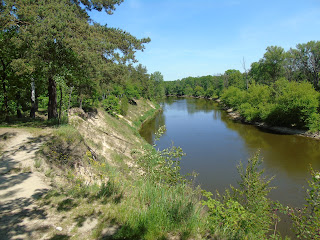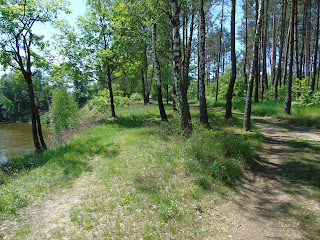©Andrzej Philips
Near Terespol, in the village Studzianka[1], there is a Tatar mizar.
The village Studzianka has
been the center of Muslim life in the area for over three centuries. Studzianka
was the Mecca of Podlasie Tatars. Until 1915, there was a mosque in Studzianka,
built after the arrival of the Tatars after 1679.
Lebiedziew in the 17th century, Tatars settled by King John III Sobieski came there - the village was the payroll after the victory in Chocim. Jakub Murza Buczacki was the heir of the village. Until 1886, there was a mosque, Tatar families lived at that time. Near the village, in the village of Zastawek (former Ułanowszczyzna - part of Lebiedziewo, separated in 1914), there is a Muslim cemetery[4]. The Tatar community in Lebiedziewo ceased to exist before World War I.
Granting lands to the Tatars
was continued by the Saxon kings, who exempted them from rent and paid only
taxes passed by the Sejm for the nobility. They lived in towns near Studzianka,
which was the center of the Tatar settlement (Lebiedzew - Zastawek, Dąbrowica,
Połoski, Małaszewicze, Piszczac, Wólka Kościeniewicka. Koszoły, Ortel (former
Wortel), Piszczac (former Piszczatka), Bokinka [called Tatar], Kościeniewicze
). Stanisław Dziadulewicz in his armorial book states that in the 1730s the
entire village of Studzianka was inhabited by Tatars. The local Muslim
community gathered around it due to the location of the mosque, which
functioned until 1915.
The Tartars of the Biała land
took part in many battles in defense of Poland. The colonel of the Tatar
banner, Samuel Murza Korycki, participated in the wars with Russia, Turkey and
Sweden. His tombstone from 1704 is located on the mizar in Zastawek. A
well-known Tatar soldier was also Colonel Aleksander Ułan, who in 1711 received
from King August II the village of Koszoły, and then lands in Studzianka, Ortel
and Lebiedziewo. According to Sławomir Hordejuk, the current town of Zastawek
at the turn of the 19th and 20th centuries was
the name
"Ułanowszczyzna". Aleksander Ulan fought during the Seven Years' War,
and his Tatar formations crushed the enemy with charges using pennant lances.
These Tatar patterns were borrowed by the Polish cavalry…
The army of the Grand Duchy of
Lithuania was commanded by the famous general Józef Bielak - one of the two
Tatar generals in the Polish army. For extraordinary bravery and courage he was
awarded the Cross of Virtuti Militari. He owned land in Koszoły. He died in
combat during the Kościuszko Uprising and was buried on a mizar in Studzianka.
In 1794, in turn, Colonel Jakub Azulewicz, commander of the royal court
regiment of the king Stanisław August Poniatowski, distinguished himself with
bravery. He owned numerous estates in Studzianka and was the sponsor (founder)
of the mosque in Studzianka. He died during the fighting in Vilnius and was
buried in the Studian necropolis. His memory was passed down from generation to
generation. In the fights of 1792 and in the uprising Kościuszko was attended
by Lieutenant Colonel Samuel Bielak, son of General Józef Bielak. The Belial
Tatars, forming a squadron in the Light Cavalry Regiment of the Guard, also
fought alongside Napoleon.
During the partitions, many
Belian Tatars also served in the Russian army. Jan Okmiński, Małaszewicz's
heir, was a major in the army of the Russian Empire. Maciej Sulkiewicz attained
the rank of colonel in the uhlan regiment, and Adam Buczacki - the rank of
captain. It is worth noting that the last imam of the parish and Studian,
Maciej Bajrulewicz, served in the tsar's army, and also traveled with services
to the soldiers stationed in the Brest fortress.
One of the last most famous
Tartars of the Biała Land serving in the Polish army in the 20th century was
undoubtedly Colonel Józef Korycki. He was born on January 20, 1888 in
Studzianka. He fought during the Polish-Bolshevik war, commanding - in the
years 1919-1920 - 12th Heavy Artillery Squadron. In the interwar period, he was
the commander of the School of Artillery Officers in Toruń and the commander of
the 16th Light Artillery Regiment in Grudziądz and the 8th Artillery Group in
Toruń. During the September Campaign of 1939, he commanded the artillery of the
"Pomorze" Army[5].
Today there are still 2 Tatar
villages in the north-east Poland: Bohoniki[6]
i Kruszyniany[7].



























































